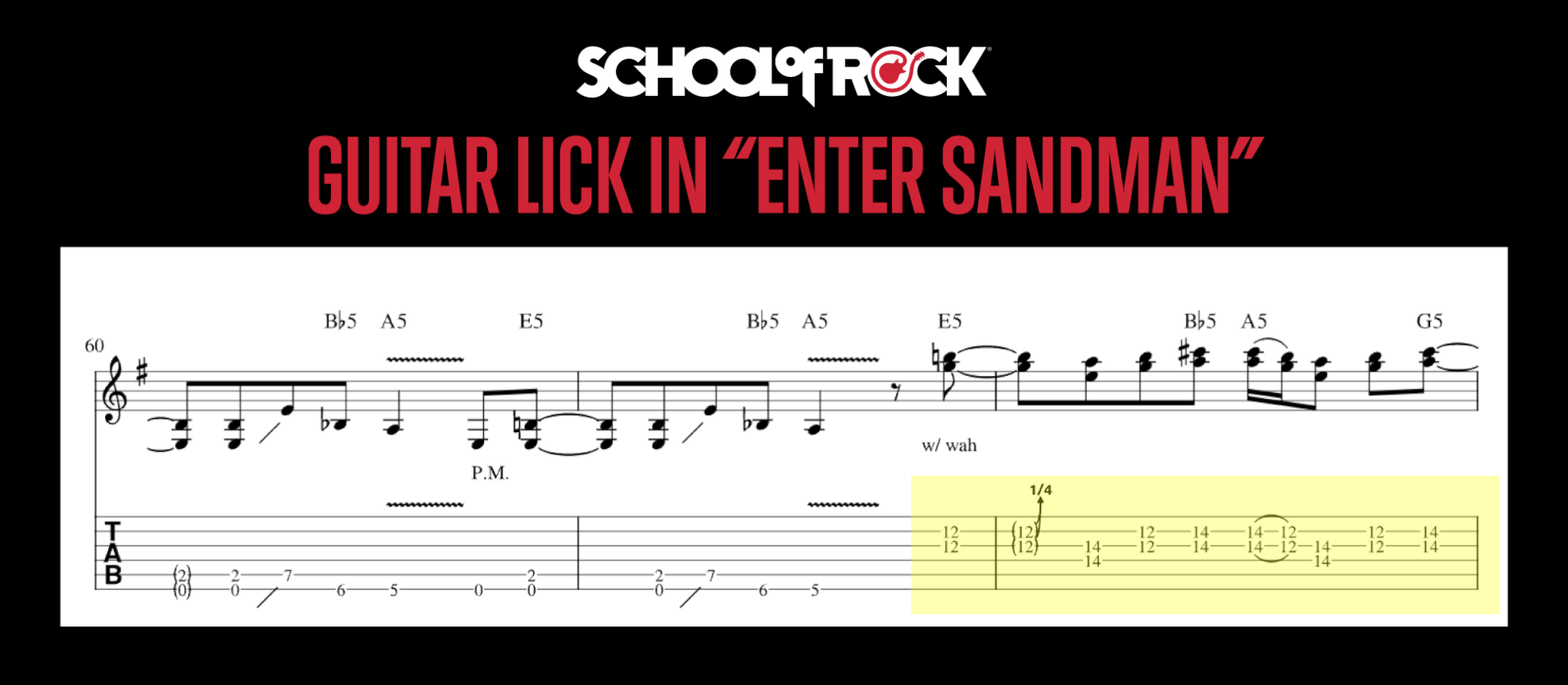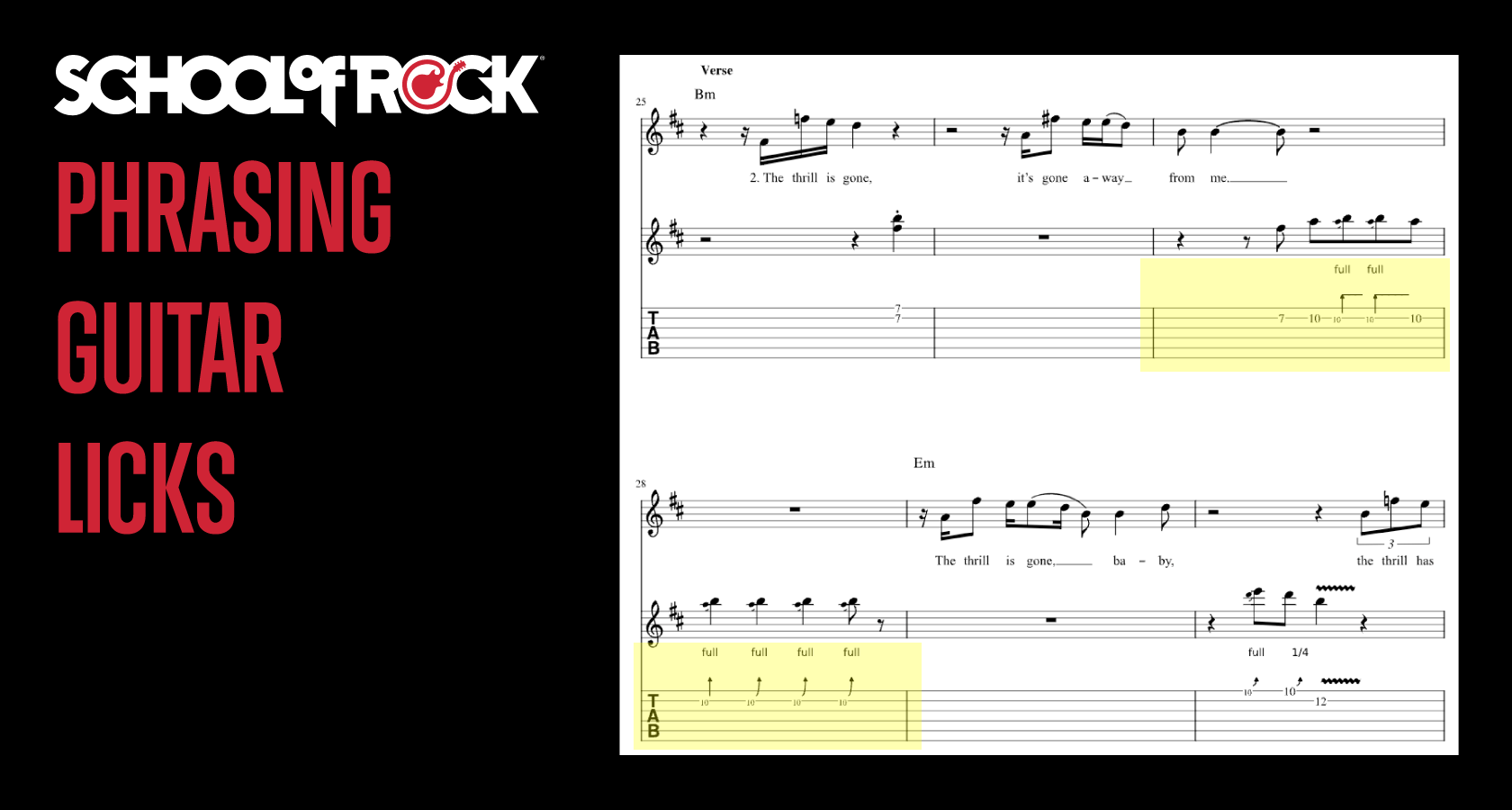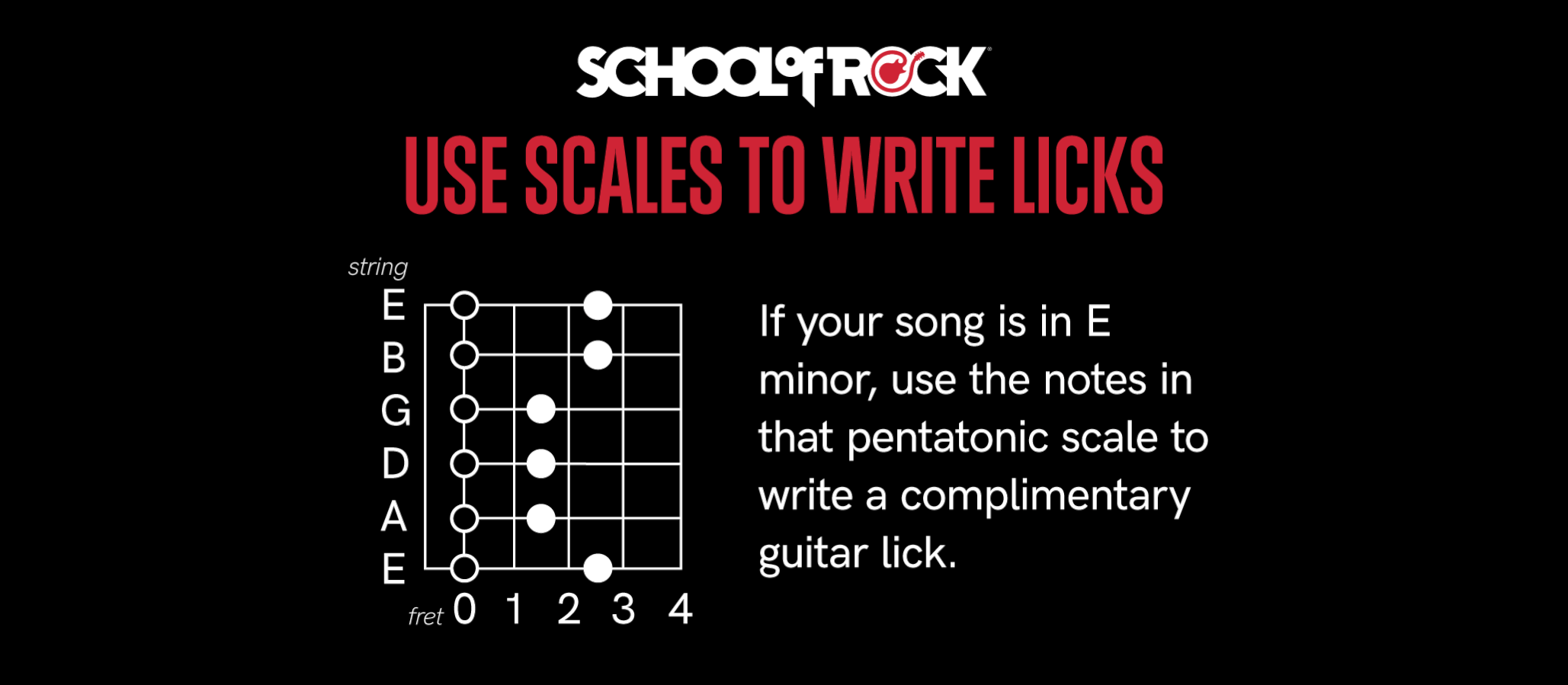Want to play guitar licks like the pros but don’t know where to start? School of Rock has everything you need to know! We’ll examine everything you need to start shredding licks like the pros in this article. No matter where you’re at in your guitar-playing journey, School of Rock will guide you from start to finish. From learning what a guitar lick is, to how to phrase your licks like some of the greatest ever to touch their instrument, we’ve got you covered!

What is a Guitar Lick?
A guitar lick is a musical idea, often used in improvisation, that is ultimately incomplete on its own. It’s usually not repeated or used multiple times throughout a song. The best way to really get a feel for what a guitar lick sounds like is to hear an example. In Metallica’s “Enter Sandman,” Kirk Hammett plays a perfect example of a guitar lick based on the E minor pentatonic scale at the 1:58 mark. On the School of Rock Method app, this is bar 61. You’ll notice how only a few short notes are used and the lick is over pretty quickly. On their own, these notes and rhythms don’t form their own musical idea. This is a short musical phrase that isn’t repeated or used as a motif but is instead used to add some flair, energy, and color during the transition to the second verse. This short but effective guitar lick really helps the lead guitar stand out and adds a great effect to the song!

Why You Should Play Guitar Licks
Not only are guitar licks a ton of fun, but they can add so much color, energy, and emotion to your music! A well-played lick in the right place can be very versatile and complement your music however you need. They can add some stylistic expression, highlight your guitar-playing personality, help you convey the mood of your music, and can even be used to help you transition between parts. B.B. King was masterful at expressing himself and conveying the mood of the song with his guitar licks. Listen to the licks during the verses in “The Thrill is Gone” to get a sense of this. King’s use of bends and short bursts of notes not only fill the silence at the end of each line but also add emotion and soul. Contrast this with the lick in “Enter Sandman” we looked at earlier, and you can see just how diverse you can get with guitar licks. The sky really is the limit, and it’s up to you to get creative with your licks and find what you love!
Guitar Licks vs. Riffs: What’s the Difference?
It’s easy to get confused by the difference between a guitar lick and a guitar riff. A guitar riff is often used as the main motif or musical idea of a song. Think of the opening guitar part in the legendary “Smoke on the Water” by Deep Purple. This riff is repeated throughout the song and is used as its main idea. The band plays with and around this riff throughout the song. It’s used as the driving theme and we hear it played repeatedly to drive home this idea. Not every riff is used as the main idea though. You’ll often hear guitar riffs behind guitar solos or transitions between parts in the song! Compare what you now know about riffs to the licks we looked at in “The Thrill is Gone” and you can see how one is used as the main idea (“Smoke on the Water”) and the other is used sparingly to add color and emotion (“The Thrill is Gone”).
Phrasing Guitar Licks Like a Pro
Where guitar licks are the actual notes and rhythms being played, phrasing is how you present these licks within the context of the music. Phrasing can be thought of as a small sentence or statement within a song. Great phrasing utilizes space to separate these sentences so that we don’t get the musical equivalent of a run-on sentence. Space can be between individual notes or entire licks, and using both to your advantage is how the pros do it! Looking at “The Thrill is Gone” again, we can see a masterful example of phrasing by B.B. King. Starting at bar 25 on the School of Rock Method app, you can see the short stabs of notes King uses, followed by a bar of space. Following this, the next lick starts with a series of eighth notes followed by four quarter notes. This is a great example of space between rhythms! Here, King uses the space between eighth notes and quarter notes to phrase this lick. Try to incorporate some of these ideas into your own licks, and see how it sounds. Using space to your advantage will help you phrase your guitar licks to sound like the pros.

Writing Great Guitar Licks
Now that we know what guitar licks are and how to phrase them, let’s learn how to write great guitar licks. First, start by identifying notes that will work in the context of the music. The easiest way to do this is by finding what key the song or riff you’re playing over is in. Let’s say we’re in the key of E minor. In this case, the E minor pentatonic scale would work great. The notes in the minor pentatonic scale are A, B, G, E, and D. Experiment on the fretboard to find a register that you like. Next, find a group of notes and a pattern you like. If you’ve found a four-note grouping you like, start trying to put them into a rhythm that compliments the song. Once you have an idea of the notes and rhythms you want to use, play around with it in the context of the music you’re playing along to. Don’t forget about using phrasing and space to really take your lick up a notch! Add space between bursts of notes and experiment with different rhythms. Drawing on inspiration from some of your favorite guitar player’s licks can be a great way to start writing your own as well!

Writing and playing guitar licks with a seasoned instructor can take your guitar playing to the next level. School of Rock has all the resources you need to amp up your skills beyond what you thought was possible! We offer group programs like Rock 101 and the Performance Program that can guide you along the way, and give you the experience of playing with a band. Many of the songs you will learn and perform at School of Rock will incorporate guitar licks of all kinds that will propel your playing and get you sounding like the pros! Visit or contact your local School of Rock to get started.
About the Author
Cody Patterson teaches the guitar, drums, vocals, bass, and keys at the Louisville and St. Matthews School of Rock locations.



